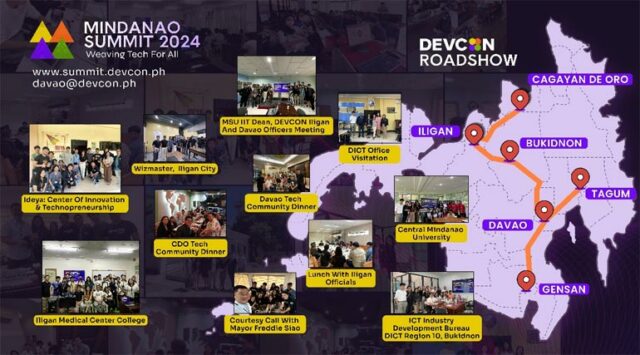The 1987 Constitution is about fighting the last war. That’s how outdated it is. Its Filipino First and Filipino Only provisions are reflections of the anti-colonial struggle against the United States.
The anti-colonial mood started with the 1935 Constitution when ownership of public utilities was limited to Filipinos only during the Commonwealth era. The 1899 Constitution had no such provision. On the contrary, the 1899 Constitution allowed foreigners to practice their trade.
However, in 1946, the parity amendment in our Constitution as a condition for independence from the United States further stoked anti-colonial sentiments. The parity amendment gave Americans equal rights as Filipino citizens to exploit natural resources. It was passed only after six members of the leftist Democratic Alliance were denied their House seats on the grounds of fraud and violent campaign tactics in the 1946 election.
Filipino First became the battle cry of former President Carlos P. Garcia, articulating the demands of Filipino businessmen to access foreign exchange. Under the Bell Trade Act, before its amendment by the Laurel-Langley Agreement in 1955, the Philippines could not use the market mechanism to allocate foreign exchange. The President of the United States had to approve any change to the exchange rate of P2 to $1, set by the United States as a condition for independence. (The huge peso overvaluation caused the foreign exchange crisis in 1949.)
Therefore, the government had to allocate scarce foreign exchange by fiat and the American companies were given priority in accessing foreign exchange. This stoked resentment among the Filipino bourgeoisie and economic nationalism became a battle cry of politicians like Claro M. Recto. Filipino First was initially about access to dollars, not some broad political movement.
Unfortunately, both the Left and the oligarchy have used these anti-colonial sentiments for their ends. Economic nationalism has been equated with Filipino protectionism and anti-neocolonialism.
This was further reinforced during the Marcos Sr. regime when the Left linked the democratic struggle against the Marcos dictatorship to the US. The Left’s call was to struggle against the “US-Marcos” regime. Businessmen were to be part of the “National United Front.”
This ideology was reflected in the 1987 Constitution with its many Filipino First and Filipino Only provisions. These provisions were a continuation of the anti-colonial sentiments that started in the 1935 Constitution. However, the anti-Marcos oligarchy in partnership with the Left went even further and put the idea of Filipino First into the Constitution (Article II Section 19 and Article XII Section 10) and placed foreign ownership restrictions in mass media and advertising and the practice of professions, which were not part of previous Constitutions.
The 1987 Constitution was written 36 years ago: before globalization, the rise of China, the fall of the Berlin Wall, the internet, satellite communications, cellphones, social media, robotics, bioengineering, the US-China rivalry, the pandemic, the Ukraine war, “derisking and deglobalization,” climate warming, and artificial intelligence.
The fight against colonialism has long been over. While the late Joma Sison’s senescent comrades may still be crying against US imperialism, it is “socialist” China that is encroaching on Philippine sovereignty.
Unfortunately, the fight against colonialism was exploited by Filipino oligarchs who used the Constitution to exclude any foreign competition. That is why the Philippines is the most concentrated economy in Asia, i.e. monopolies and duopolies dominate the economy.
The 1987 Constitution is also outdated on another major matter.
In 1987, the Philippines faced a major Communist insurgency: the CPP-NPA (Communist Party of the Philippines-New People’s Army) with its 25,000-armed rebels was threatening to topple the government. Under those conditions, the 1987 Constitution is full of social justice provisions. It is heavy with mandates for asset distribution, particularly land reform.
The 1988 Comprehensive Agrarian Reform Law was passed soon after the passage of the 1987 Constitution.
Thirty-four years later, the Philippines has the world’s most successful land distribution program, according to the World Bank. Following the 1987 Constitution and the 1988 Comprehensive Agrarian Reform Law, large farms were broken up and given to farmer tenants.
The result was land fragmentation. The average size of farmland became one hectare or less. At the same time, according to the economists Tasso Adamapolous and Diego Restuccia in the prestigious American Economic Journal, land productivity fell by 15%. Landless peasants became impoverished landlords, according to National Scientist Dr. Raul Fabella. Land reform may have taken the oxygen out of the insurgency, but it didn’t eradicate poverty. Instead, it magnified it.
Fast forward to today — the Communist insurgency is dying. President Marcos has proclaimed that there are no more guerrilla fronts and only about 1,500 fighters left scattered all over the archipelago. Jose Ma. Sison is dead. So are the Tiamzon couple, the conjugal leadership of the CPP.
Today, education, rather than asset distribution, seems to be the equalizing reform. High-paying jobs through manufacturing may no longer be within reach. Labor-intensive manufacturing has fled to Vietnam and Bangladesh because of our high minimum wages, 26 paid holidays, and labor security regulations (a product of populism and our leftist Labor Code.) China has a huge manufacturing capacity and accounts for 35% of global manufacturing. Instead of going through the industrialization route, which may be impossible with Chinese manufacturing overcapacity and our labor policies, we may have to strive for high-end services to generate high-paying jobs, but this would require high educational skills.
Alas, our educational system is in crisis. Our learning poverty rate (the inability of 10-year-olds to comprehend simple age-appropriate concepts) is about 90% according to the World Bank. Our 15-year-olds rank near the bottom of the PISA test (Program for International Student Assessment.)
Worse, our Constitution reserves the education sector only for Filipinos even if we could benefit from foreign methods and technology. It also reserves the practice of professions only for Filipinos even if foreign professionals can bring much-needed expertise and prestige here. Just bringing in foreign professors to teach at local universities is a hassle. In contrast, other countries give out talent visas liberally to attract foreign talent. We give out citizenship to foreign basketball players but not to foreign scientists.
Sadly, many miseducated intellectuals are still fighting the last war. Their ideology is still stuck in the 1980s (courtesy of Recto, Constantino, Amado Guerrero, and a hatred for anything Marcos). Many so-called “progressives” have become reactionaries because they prefer the status quo, rather than modernizing our Constitution.
Let’s change our outdated Constitution, not keep fighting the last war.
Calixto V. Chikiamco is a board director of the Institute for Development and Econometric Analysis.
idea.introspectiv@gmail.com
www.idea.org.ph














